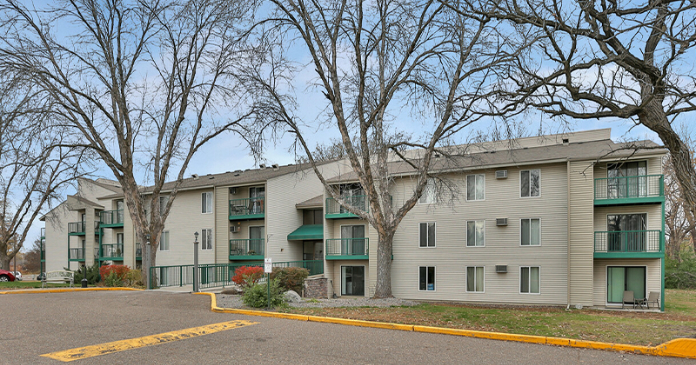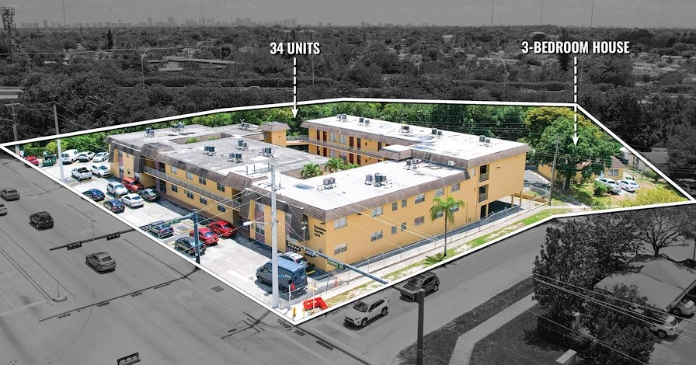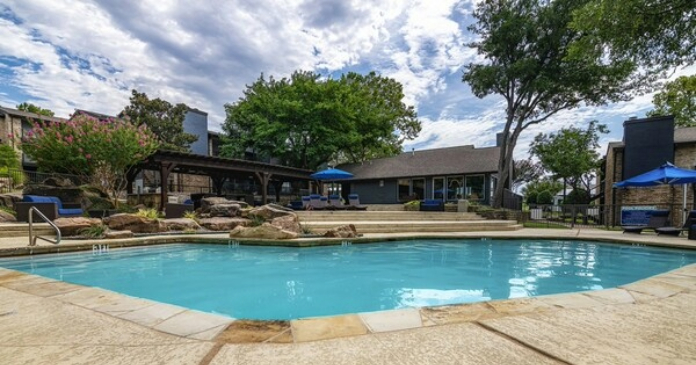“On the brighter side, the Washington, D.C., metropolitan area is performing ahead of expectations. The area has the lowest unemployment rate and the most favorable job outlook of any AvalonBay market,” Leo Horey, VP of operations for the fourth largest apartment REIT in the country with a mostly bi-coastal portfolio of around 50,000 units, said at the end of April. “While supply as a percentage of total inventory remains high, at roughly 1.5 percent, apartment deliveries are being absorbed.”
In fact, occupancy averaged approximately 96.7 percent in the first quarter of 2009 at the company’s nearly 6,000-unit portfolio in the D.C. metro, with year-over-year rental revenue growth remaining positive in Q1 and the rate of decline in rental rates actually improving throughout the quarter, he said.
Three months later, AvalonBay CEO Bryce Blair told an audience at the company’s presentation at NAREIT’s conference in June that all of the REIT’s markets were showing revenue declines on a year-over-year basis, but metro D.C. was holding up better than any of AvalonBay’s other markets, with a revenue decline of just 0.7 percent. “In the first quarter, we experienced modest revenue declines of just over one percent throughout the portfolio overall and we indicated that we expected that to accelerate throughout the balance of the year. So far, through the second quarter, so this is actual results for April and May, we show a year-over-year revenue decline of 2.5 percent for our portfolio, which brings our year-to-date numbers to about a 1.5 percent decline,” Blair said.
Compared to D.C., Southern California, where the REIT owns nearly 3,700 units spread from Los Angles down to San Diego, experienced a revenue decline of approximately 2.7 percent, with the former portfolio superstar bringing up the rear in NOI, which declined 5.6 percent from Q1 2008 to Q1 2009. New England and Metro New York, where AvalonBay owns around 12,000 apartments, saw revenue slippage of around 1.8 percent year-over-year but revenues at the nearly 7,000 units the REIT owns in Northern California and the Pacific Northwest experienced a 0.9 percent increase.
Execs at other apartment REITs with a presence in the nation’s capital and its neighbors share AvalonBay’s enthusiasm for market’s steady, reliable performance in this unsettled economic climate. In his February summary of performance in Q4 2008, Fred Tuomi, executive VP of property management for multifamily giant Equity Residential, was bullish on the D.C., Maryland and Virginia markets. “There has been good job growth there the last couple of years,” he said, adding the caveat that the employment equation could turn slightly negative later in the year.
“But, I think, with the government rallying and creating a lot of jobs right there in their own back yard, it will be pretty stable,” said Tuomi, who oversees portfolio asset management for the country’s largest apartment REIT, which owns and manages around 146,000 apartments in 537 properties in 23 states, spread from coast to coast.
In the D.C. area, Equity’s regional portfolio consists of more than 13,000 garden-style, mid- and high-rise apartments, with 8,781 units in 26 properties in metro D.C. and Northern Virginia markets and some 6,000 apartments in 22 suburban Maryland assets, bringing the total for the D.C. area to around 10 percent of the company’s portfolio.
“We’ve absorbed a lot of new units there extremely well over the past two years and I think that should continue into 2009,” he said in February, a prophesy that proved true in the following few months.
“The company saw positive trends in most of its East Coast markets, with Boston and Maryland, D.C., and Virginia all performing ahead of our expectation and maintaining positive growth trends through the first quarter,” he said at the end of April.
“Our net effective new lease rents were up in January in all of these three markets. They were up four percent in Boston, up four percent in Maryland, and April renewal rents are up two percent in the D.C.
Virginia market,” he said. “Boston is just doing fantastic and the D.C. markets, Maryland and Virginia are very solid.”
Camden Property Trust was pleasantly surprised by the leasing velocity at the company’s four recently completed apartment communities in the D.C. market, which an analyst said, during the REIT’s Q1 earnings call this year, showed “pretty remarkable progress on the leasing front.”
Camden is in lease-up on two assets in Virginia and another two in Maryland. The 378-unit Camden Potomac Yard, a $104 million community in Arlington, Va., was 87 percent leased at the end of Q1, when occupancy at the $62.2 million, 291-unit Camden Summerfield in Landover, Md., was 86 percent and 76 percent at the $127.9 million, 508-unit Camden College Park in College Park, Md. All three of those assets were completed in Q2 and Q3 2008. The $72.2 million, 291-unit Camden Dulles Station in Oak Hill, Va., which was finished in Q1 this year and 57 percent leased by the end of the quarter, also brought to an end the REIT’s current development activity of wholly-owned apartments in metro D.C.
“We clearly have adjusted pricing. I think everybody in the market has adjusted pricing based on more concessions in the market,” said Campo of the lease-up success in the D.C. area. “But it’s also the strength of the market. Washington, D.C., is definitely a bright spot in the country,” he said. Although the fall and winter leasing seasons in the nation’s capital were particularly tough, he said, the company saw a definite pick-up in traffic and the number of new leases in Q1.
Camden’s nationwide operating portfolio consists of more than 63,000 apartments in 182 upscale properties that span the country. In Q1, the D.C. region contributed 16 percent of the company’s NOI, the largest of any of its 15 high-growth markets, nearly twice as much as Houston, the company’s next biggest NOI contributor and the location of the REIT’s headquarters. In Q1 Houston assets generated 9.3 percent of the company’s Q1 NOI, followed by Las Vegas at 8.5 percent.
The REIT owns and operates around 6,000 units in 17 properties in the D.C. Metro, which Camden effectively entered early in 2005, with the acquisition of Summit Properties Inc. for nearly $2 billion. Summit’s nearly 15,000-unit, 47-property portfolio included around 3,000 units in nine assets in Virginia, Maryland and D.C.
Execs at UDR Inc., the nation’s fifth largest apartment REIT, are equally enthusiastic about the market that is expected to contribute 11.4 percent of the company’s 2009 total pro forma NOI this year.
While many of its peers were reporting negative NOI for the quarter, the 37-year-old, Colorado-based company managed to squeak out some minuscule positive revenue growth across its portfolio in Q1, partially thanks to its D.C. portfolio, which saw a two percent year- over-year increase in NOI in the first three months of 2009. The REIT owns, either wholly or in joint venture, 2,050 units in Metro D.C., with a total of 8,134 units in the Mid-Atlantic, in its nationwide portfolio of 45,000 apartments in 15 high-growth markets spread from one side of the country to the other that saw revenue growth of 0.4% year-over-year in Q1.
As that quarterly earnings call drew to a close, CEO Tom Toomey, who has slimmed the company down by about two-thirds, while transforming it into a bi-coastal and Sunbelt-region operation since he took over the reins at UDR in 2001, encouraged analysts to take a look at the locations of UDR’s unstabilized assets and ask themselves what the portfolio would look like a year from now.
“I think you would be shocked to realize that D.C. will be our second largest market,” he said. “Orange County, Calif., will continue to be our first and San Francisco will be the third. Those three markets combined would represent over 35 percent of our NOI and we’re very comfortable with those markets and those percentages,” he said.
In June, Toomey told an audience at the National Association of Real Estate Investment Trusts’ annual conference that every one of the REIT’s markets is in a different cycle. He used the D.C. area, where entitlements for development of the $125 million, 255-unit 2400 14th Street in the District are substantially complete, as an example. “In the D.C. market today, I think we’re all very well convinced that the government’s going to grow and the job growth is going to be very high,” he said, explaining how he plans to add value during the job- growth cycle in and around the nation’s capital.
“What I do is, I come in and I rehab assets and I’ll put incremental capital of $1,000 and charge someone $50 more for rent. The return on investment’s about 50 percent,” he said, adding that, last time he checked, that was pretty good NAV accretion.















